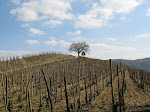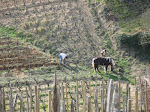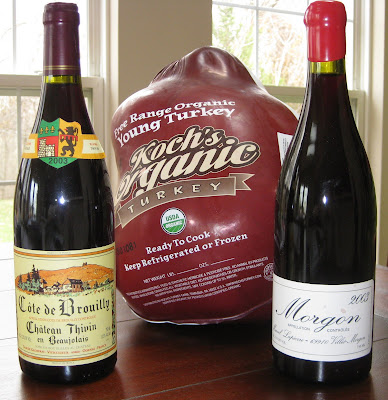
Long overlooked and underrated, the red wines made from the hill of Corton are about to receive a major boost. Domaine Romanee Conti has announced that it will be leasing vineyards on Corton from the Domaine Prince Florent de Merode. The grand crus Les Renardes, Les Bressandes and Clos du Roi will be exploited by DRC beginning with the 2009 vintage. DRC co-director Aubert de Villaine cited the prime location of the plots and the old vines they contain as the primary reasons for the domaine's interest. The Prince and Princess Merode recently died within six months of each other and, according to Bruce Sanderson of the Wine Spectator, the heirs of the estate contacted DRC about the possible lease.
This arrangement is big news. DRC has long prided itself in only producing grand cru wines from the best appellations. Excluding a little Vosne Romanee premier cru that is bottled every few years, the only red wines made by the estate are from grand cru sites in Vosne Romanee and Flagey-Echezaux. When the domaine decided to make some white wine it bought a plot in Le Montrachet. Oh yeah, DRC are also produces two barrels of Batard-Montrachet, but they choose not to release it. Instead the Batard is drunk in-house and given away as gifts. The fact that Domaine Romanee Conti is interested in making and bottling wines from the hill of Corton speaks volumes about the potential quality of this appellation. While many collectors ignore the reds from Corton, the management of DRC obviously sees their potential.
Many consumers are of the mind set that red Cortons are not worthy of their grand cru status, but this notion is disputed by some of the leading critics. Clive Coates places Corton Clos du Roi, along with Le Musigny, La Tache, Chambetin and Romanee Conti, in the highest classificaion of Burgundy's vineyards. The Burghound himself, Allen Meadows, has said that reds from Corton are indeed grand cru wines, but they usually need a good twenty years to reach maturity. I have found that Cortons are often hard and firm when young. The charmless/coarse nature of many young Cortons is most likely the main reason why many Burdgundy drinkers do not hold them in high esteem. Despite the critical acclaim, the prices charged for Corton rouge have remained well below that of the Cote de Nuits grand crus. The Cortons bottled by DRC, however, will surely be outrageously expensive and highly sought after by collectors. The attention DRC is going to bring to the appellation will benefit all the growers who bottle wines from the hill. Perhaps reds from Corton will finally receive the prestige that has eluded them for so long.


















